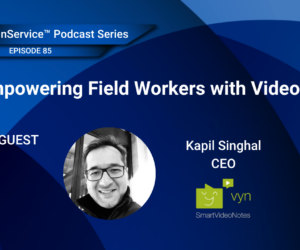Let’s take the example of my children and discovering what they’d like for breakfast. The big data approach would be to take a view of every meal they’ve ever eaten, the frequency, how much was actually consumed, it might even look at data from their peers or global trends etc. Now this might give an accurate result, but it doesn’t account for the fact that the breakfast cereal my eldest daughter insisted I buy in the store on Saturday, she’d decided she absolutely hates and it makes her feel sick by Monday morning. The small data solution would be to ask her, sigh and look in the cupboard for an alternative.
Why bigger isn’t better
I appreciate we’re unlikely to apply big data to my children’s meal preferences in the real world, but many organisations are falling into the trap of throwing increasing amounts of AI (and investment) at solving problems that could be solved far more effectively and efficiently by small data. Another problem of big data is that it’s slow, especially when it’s harvested from workflows such as CRM. Often incomplete and out-of-date data leads to incomplete and inaccurate reporting from these systems.
In sales, this can be disastrous: Sales leaders need to have an accurate and timely view of their pipeline in order to forecast accurately and make key decisions about where to prioritise investment. Sales cycles are lengthening, the cost of sales rising and actual selling time is already hard pressed by a growing administrative burden. In these challenging times the ability to close out poor opportunities faster to focus investment on the best is going to quickly become a key competitive advantage.
Small data is human ‘why’ data
The subject of small data was addressed by Martin Lindstrom. In his 2016 book, Small Data: The Tiny Clues That Uncover Huge Trends, he argues that the Small Data explains the ‘why’ behind what Big Data reveals. He spent time with 2,000 families in more than 77 countries to get clues to how they live — resulting in the acquisition of what he likes to call Small Data. Lindstrom said:
“Big Data is all about finding correlations, but Small Data is all about finding the causation, the reason why.”
Here’s one great example of how small, human data could work in sales. Imagine if a sales leader could understand what their sales person thought the moment they left the meeting. And AI and machine learning can help here, without the need for big data, by digitizing the whole process of human data capture. Right after the meeting has finished your mobile platform prompts the sales person to simply answer structured questions relevant to the appropriate stage in the sales cycle for their opportunity. Then those answers are shared directly into the opportunity record on your CRM system. The sales leader doesn’t have to rely on lengthy conference calls or sales operations finding answers for them, they can see exactly what’s happening, enabling them to make better and faster decisions. This could save millions in SG&A costs, improve win/loss ratios and reduce the admin burden on your hard working reps.
Get a smaller box
Malcolm Gladwell wrote, about Enron, that they had so many people busy ‘thinking out of the box’ that maybe it was the box that needed rethinking. Of course big data has its place, but maybe starting with smaller boxes would make more sense sometimes.




Leave a reply